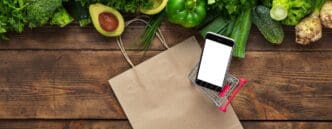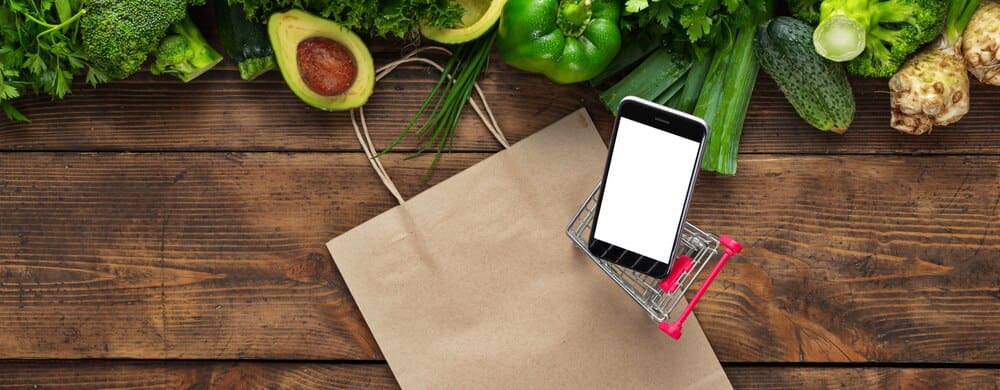Navigating the grocery store on a tight budget can often feel like a battle between your wallet and your wellness goals, but eating a nutritious diet doesn’t have to be expensive. For anyone looking to improve their health without straining their finances, the solution lies in focusing on whole, nutrient-dense foods that are widely available and consistently affordable. By building your meals around a core group of powerhouse ingredients like lentils, oats, eggs, and potatoes, you can provide your body with the essential protein, fiber, vitamins, and minerals it needs to thrive, proving that a healthy lifestyle is accessible to everyone, regardless of their budget.
Why Nutrient Density Matters More Than Price Tags
When we talk about healthy eating, a key concept is nutrient density. This refers to the amount of beneficial nutrients—like vitamins, minerals, and protein—a food contains relative to its calorie count. A doughnut, for example, is calorie-dense but nutrient-poor, while a cup of spinach is nutrient-dense but very low in calories.
Focusing on nutrient-dense foods is the secret to budget-friendly wellness. These foods provide the maximum nutritional benefit for every dollar you spend. They keep you feeling full and satisfied, support stable energy levels, and contribute to long-term health, reducing the risk of chronic diseases linked to poor nutrition.
In contrast, many cheap, highly processed foods are designed for taste and shelf-life, not nutrition. While they may fill you up temporarily, they often lack the essential building blocks your body needs, leading to energy crashes and health complications down the road. Investing in affordable, whole foods is an investment in your future well-being.
The Top 10 Healthiest and Cheapest Foods
Here are ten of the most affordable and nutritionally powerful foods you can add to your grocery list today. They are versatile, easy to prepare, and form the foundation of a sustainable, healthy diet.
1. Lentils
Often overlooked, lentils are a true nutritional superstar. A single cup of cooked lentils provides about 18 grams of protein and 16 grams of dietary fiber, which is more than half of the recommended daily intake. This combination of protein and fiber promotes satiety, aids digestion, and helps stabilize blood sugar levels.
Lentils are also rich in folate, iron, and manganese. You can buy them dried in bulk for pennies per serving, making them one of the most economical protein sources available. Unlike other dried beans, they don’t require pre-soaking, so you can cook them in just 20-30 minutes for a quick addition to soups, stews, salads, or as a base for plant-based burgers.
2. Oats
A container of rolled oats is one of the best investments you can make for your health. Oats are famed for their high content of a soluble fiber called beta-glucan, which has been scientifically shown to help lower LDL (bad) cholesterol levels and improve heart health. This fiber also helps you feel full, making oatmeal a perfect breakfast to prevent mid-morning snacking.
Beyond breakfast, oats can be ground into flour for baking, added to smoothies for thickness and fiber, or used as a binder in meatballs and meatloaf. Always opt for plain rolled or steel-cut oats in bulk rather than pre-packaged, flavored instant oatmeal, which is often loaded with sugar and costs significantly more.
3. Eggs
Eggs are often called nature’s multivitamin for good reason. For just a few cents per egg, you get a fantastic source of high-quality, complete protein, meaning they contain all nine essential amino acids. They are also rich in choline, a crucial nutrient for brain health and development, as well as vitamins D and B12.
Don’t fear the yolk; it’s where most of these valuable nutrients are stored. Eggs are incredibly versatile—scrambled, boiled, fried, or baked into frittatas—making them an easy protein source for any meal of the day.
4. Potatoes and Sweet Potatoes
Potatoes have been unfairly demonized by low-carb diets, but they are an affordable, filling, and nutrient-rich food. A single potato with the skin on is an excellent source of potassium—more than a banana—and vitamin C. Their complex carbohydrates provide sustained energy.
Sweet potatoes offer a similar profile but with the added massive benefit of beta-carotene, which the body converts into vitamin A. This vitamin is essential for vision, immune function, and skin health. Both types of potatoes are incredibly versatile; roast them, bake them, mash them, or add them to stews for a hearty, low-cost meal component.
5. Beans (Canned or Dried)
Like their cousin the lentil, beans are a cornerstone of budget-friendly, healthy diets around the world. Whether you choose black beans, kidney beans, or chickpeas, you’re getting an exceptional source of plant-based protein, fiber, and important minerals like iron and magnesium. This powerful combination supports digestive health and provides lasting energy.
Dried beans are the most economical option, though they require soaking and a longer cooking time. Canned beans offer convenience for a slightly higher price; just be sure to choose low-sodium versions and rinse them before use to remove excess salt.
6. Frozen Vegetables
Fresh vegetables are wonderful, but they can be expensive and spoil quickly, leading to food waste. Frozen vegetables are a fantastic alternative. They are picked and flash-frozen at their peak ripeness, which locks in their vitamins and minerals. In fact, studies show that frozen produce like broccoli, spinach, and peas are often just as nutritious—and sometimes more so—than their fresh counterparts.
Keeping a stock of frozen vegetables ensures you always have a healthy side dish on hand. Steam them, roast them, or toss them into soups, stir-fries, and casseroles to effortlessly boost the nutritional content of any meal.
7. Canned Tuna or Sardines
For a cheap and convenient source of high-quality protein and heart-healthy omega-3 fatty acids, look no further than canned fish. Omega-3s are essential fats that play a critical role in brain function and reducing inflammation throughout the body. Canned light tuna and sardines are excellent, low-cost options.
Sardines are a particularly great choice as they are small, low on the food chain (meaning less mercury), and are packed with calcium because you eat the tiny, edible bones. Opt for fish packed in water instead of oil to keep calories in check, and use it to make sandwiches, salads, or pasta sauces.
8. Brown Rice
Brown rice is a staple whole grain that provides complex carbohydrates, fiber, and essential nutrients like magnesium and selenium. Unlike white rice, the bran and germ are left intact, which is where all the fiber and nutrients reside. This fiber slows down digestion, preventing the sharp blood sugar spikes associated with refined grains.
Buying brown rice in large bags from the bulk section dramatically reduces the cost per serving. It serves as a perfect, filling base for stir-fries, grain bowls, or as a simple side dish for nearly any protein.
9. Bananas
When it comes to affordable fresh fruit, it’s hard to beat the banana. They are a powerhouse of potassium, an electrolyte that is vital for maintaining healthy blood pressure and heart function. They also provide vitamin B6 and convenient, portable energy from their natural sugars and fiber.
Use them as a simple snack, slice them over oatmeal or yogurt, or blend them into smoothies. Overripe bananas are perfect for baking into healthy banana bread, ensuring nothing goes to waste.
10. Cabbage
Cabbage is one of the most underrated vegetables in the produce aisle. It is incredibly inexpensive, lasts for a long time in the refrigerator, and is packed with nutrients. Cabbage is an excellent source of vitamin C, which is crucial for immune support, and vitamin K, which is important for blood clotting and bone health.
It’s also surprisingly versatile. You can shred it for coleslaw, sauté it with onions, roast it in wedges until sweet and tender, or use it as a low-carb wrap. Its low price and long shelf life make it a budget-friendly staple.
Putting It All Together: A Final Thought
Achieving a healthy lifestyle does not require a large income or access to specialty health food stores. By focusing your shopping list on these ten foundational foods, you empower yourself with the tools to create countless nutritious, satisfying, and affordable meals. Planning your meals, cooking at home, and embracing these humble ingredients is the most sustainable path to long-term wellness, proving that good health is truly within everyone’s reach.







